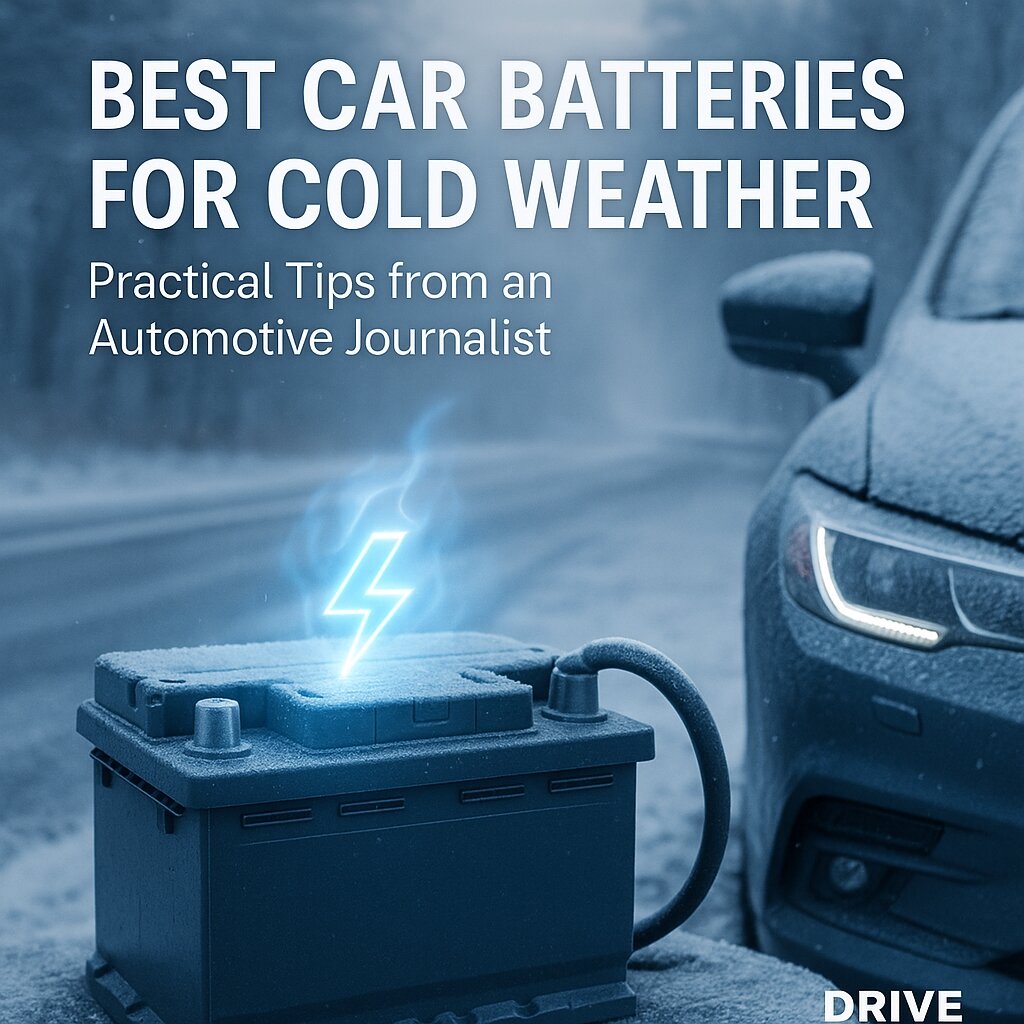When the Temperature Drops: Why Car Batteries Struggle in the Cold
If you’ve ever twisted the ignition on a frosty Bay Area morning and heard nothing but a sluggish whirr, you know that winter can be brutal on car batteries. As someone who’s spent years comparing the quirks of EVs and gas-powered cars, I’ve noticed that cold snaps don’t discriminate—lithium or lead-acid, all batteries suffer. But why does this happen? It’s simple physics: chemical reactions slow down as temperatures drop, which means batteries can’t deliver power as efficiently. In traditional cars, that means the starter motor might groan or just give up. In EVs, you’ll notice reduced range and longer charging times. Either way, winter puts your battery to the test.
What Actually Makes a Battery 'Good' for Winter?
Let’s get practical. For cold weather performance, what matters most is Cold Cranking Amps (CCA)—a measurement of how much current a battery can deliver at zero degrees Fahrenheit for 30 seconds without dropping below a specified voltage. The higher the CCA rating, the better a battery will perform when it’s freezing out. Reserve capacity is another factor; it tells you how long your battery can run essential systems if your alternator fails. For EVs, look for thermal management systems or battery heaters—some Teslas and Hyundai Ioniq 5s, for instance, precondition their packs to keep them cozy even when you’re not.
Batteries That Stand Out in the Cold
There isn’t a one-size-fits-all pick, but some brands and models have built solid reputations among mechanics and drivers alike. For traditional gas vehicles, here are a few widely recommended options:
- Odyssey Extreme Series AGM: These absorbed glass mat (AGM) batteries are praised for their high CCA ratings (often over 800 CCA) and robust build quality. They’re not cheap, but you get what you pay for—less risk of waking up to a dead car on an icy morning.
- Optima RedTop: Known for their spiral-cell design, Optima batteries offer reliable cranking power even when temperatures plunge below freezing. The tactile click of my RedTop’s terminals locking in reassures me every time.
- DieHard Platinum AGM: The name says it all—these are engineered for longevity and cold-weather reliability. DieHard’s AGM tech resists vibration and copes well with frequent short trips (common in city driving).
If you’re driving an EV: direct replacement isn’t usually an option because you’re dealing with complex lithium-ion packs rather than simple 12V lead-acid units. Instead, focus on choosing models with active thermal management (like most Teslas and higher-trim Ford Mustang Mach-Es), which use heating elements or coolant loops to keep battery temperatures stable.
Sizing Up the Competition: How Do Brands Stack Up?
Battery brands are like coffee shops in San Francisco—everyone has their favorite, but a few names keep coming up for good reason. Odyssey wins points for pure cranking power; Optima brings resilience and a unique design that shrugs off deep discharges; DieHard is easy to find nationwide and generally more affordable. If you drive something like a Silverado or F-150, you’ll appreciate how much quieter these AGMs are compared to older flooded batteries—no fizzing or hissing under heavy load.
I’m mildly annoyed by how rare it is to find consistent specs across all models—sometimes even within the same brand lineup! So always check your owner’s manual for size and terminal configuration before ordering online.
Real-World Tips to Keep Your Battery Happy This Winter
Beyond picking the right battery, there are small things that make a surprising difference:
- Keep it charged. Short city trips don’t let your alternator top off the battery. If possible, take a longer drive once a week or invest in a smart trickle charger.
- Limit accessories at startup. Heated seats and defrosters are tempting on cold mornings but draw precious amps right when your battery needs them most.
- Park indoors or use an insulating blanket. Even a thin layer between your hood and the world helps trap heat overnight.
- Check connections. Corroded terminals sap power. There’s real satisfaction in hearing the firm click of clean clamps after a quick once-over with a wire brush.
- Don’t ignore warning signs. If your starter sounds labored or your headlights flicker when cranking, test your battery before it leaves you stranded outside Philz Coffee at 7AM.
The Electric Angle: EV Batteries vs. Gas Car Batteries in Winter
This is where things get interesting for me as an EV enthusiast. While lead-acid starter batteries struggle primarily with starting current, lithium-ion packs in EVs suffer from reduced range—sometimes by 20% or more on especially cold days. The faint hum from my Model 3’s underfloor heater kicks in before I even unplug from my garage charger; it’s subtle but reassuring.
Most modern EVs now feature preconditioning options via smartphone apps—handy if you want to warm up both cabin and pack before heading out. Not all brands do this equally well; Tesla’s system is seamless while some early Nissan Leaf models rely more on ambient temperature alone.
A tip from experience: always leave your EV plugged in overnight during cold spells so it can draw grid power to manage its own temperature rather than draining the main battery pack.
Wrapping Up: No Magic Bullets, Just Smart Choices
No single battery works miracles in subzero temps—but some definitely make winter less painful than others. Pay attention to CCA numbers if you’re sticking with gas or hybrid; look for thoughtful thermal management if you’re going electric. And remember: sometimes the smallest rituals—a weekly long drive or quick terminal cleaning—are what keep you rolling through those gray winter mornings.
Stay warm out there! And if you find yourself stranded by a silent starter motor (or an unexpectedly empty EV), know that even veteran auto writers like me have been there too.
Samantha Reed – reporting from foggy San Francisco where we barely see frost...but still appreciate good battery tech when we travel.

